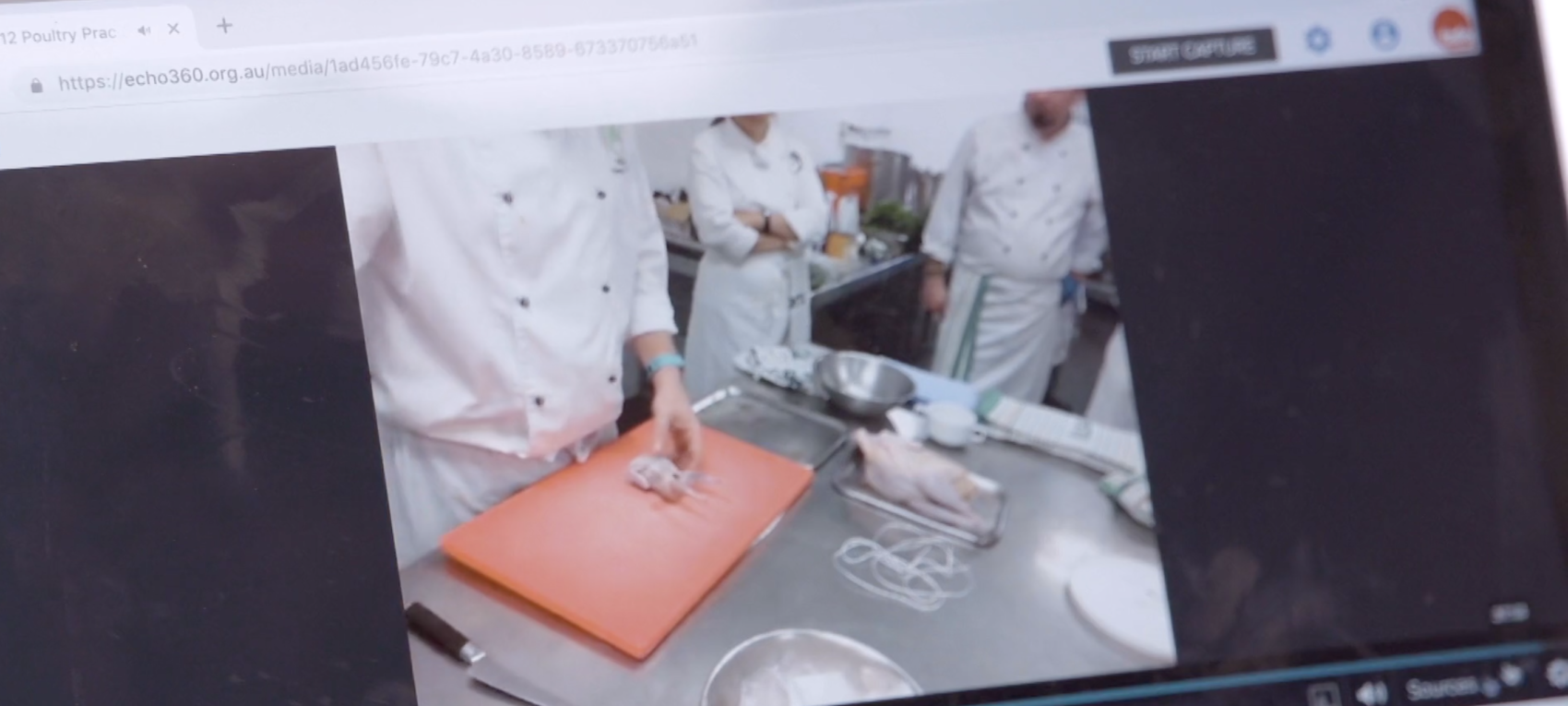Take the Power of Video Capture Outside of the Classroom and Into the Kitchen or Vineyard

Video is Everywhere. How Can We Best Use It to Support Learning?
Type ‘research on using video in higher education’, into Google and you get over 7 billion results! While I didn’t have time to read them all, I know that the blogs, articles and research papers on the first few pages all mention the benefits of using video with students.
With the rapid improvement of technology in the last ten years, especially with smart phones, those benefits go both ways. Just as we can share video content with students, the students can share their thoughts and practice back with us, either individually or in collaboration with others – and all on video. If anybody was still wondering if video had reached its tipping point as a tool for teaching and learning, they should wonder no more.
The question is not, should you use video? It is, how can you best use video to support learning? Not all video is created equal.
According to Brandwatch, we currently watch over 1 billion hours of YouTube a day and searches of ‘how to’ videos are growing 70% year on year. Out of curiosity I googled ‘how to make a souffle’ and, of the over 12 million results, one three-ingredient souffle cake had 11 million views! Most of us find video an easy, and engaging, medium to learn from – when done well.
In talking with teachers who share video with their students in Echo360, I’ve found that those who embrace the flexibility of video have had great success. These teachers will be the first to tell you that any student can google content and that their role as ‘sage on the stage’ has diminished greatly. What’s needed is the context that will enable their students to be successful in their chosen field.
Taking the Power of the “How-To” Video to the Next Level
One of our partners, William Angliss Institute, focuses on hospitality management. As Andrew Dolphin, Associate Dean of Operations, puts it, ‘there have been videos of how to carry a plate around for over 20 years, our job is to show students why the service is important’.
George Clegg from TAFE Queensland supports that sentiment when he says, ‘video allows students to see what we want them to know in exactly the way we want them to know it.’ He has analytics that show that struggling students have been watching his videos in Echo360 time and again and passing their assessments as a result. Watching a video on You Tube isn’t going to be much benefit to a Le Cordon Bleu chef if the technique doesn’t match what will be expected of them in a kitchen.
The teachers we spoke to also made it clear how easy and time efficient it is to capture video. From using a Go Pro in wine class, to a mobile phone held onto a ruler by a bulldog clip in a kitchen, to linking your video to a high end audio mixer (at Collarts, the Australian College of the Arts), the overarching message is that it doesn’t take much effort and the students have something they can watch back within a short space of time. This is one opportunity to support the anywhere, anytime concept of learning that students expect. Add to that the automaticity of Echo360 software and you have an institution-wide solution.
Video Doesn’t Replace the Classroom Experience, It Enhances It
For those who worry that students will miss class when there is high quality video available, students tell me that despite the video, they all come to class to speak to their teachers and get extra tips and tricks, talk with their classmates and for the experience of their institution. If they must miss class, they appreciate the video; however, they use Echo360 as an aid to what is being delivered in the classroom, not the replacement.
I’ve previously shared a post here about the paper from Hansch et al, 2015 where they analysed video and shared 9 affordances.
The question becomes, “how will you use video to support your students?”
As video is now ingrained in our lives, and certainly in the lives of our students, it is no longer if, but when and how. How can you use video to not only engage students, but also give them a learning opportunity they otherwise couldn’t have?
Watch the video below to hear what the teachers and the teaching and learning support personnel from 3 different institutions say about using Echo360 to share video with students. It surely isn’t about lecture capture!

